My Dear Alice

Chapter 6: 1894 – An Intensity of Intention
(photography / music / travel / bicycling)
Image attributions: (HRT) Historic Richmond Town archive; (AAH) Alice Austen House Museum collection.
1894 Alice Austen & Violet Ward in their bicycle costumes
Violet and Alice posed for two portraits in their matching outfits. (HRT)
1894 Violet Ward’s little camera (detail)
Ward is holding her new Kombi camera that shot 1 1/8″ square negatives. Alice’s 4×5″ glass plate camera is alongside her. (HRT)
1894 Alice Austen & Violet Ward in their canal costumes
Austen and Ward changed their clothes to make this portrait the same day as the portrait of them wearing their bicycle outfits. They traveled together in September. (HRT)
1894 New York City knife sharpener
One of Austen’s earliest New York street photographs that would lead to her Street Types project. (HRT)
1894 letter ordering World’s Fair photos
Isabella C. King’s letter, as presented in this episode (see notes) (AAH)
1894 envelope from Julie Bredt
Showing the commemorative stamp from the Columbian Exposition. (AAH)
Painting of the clipper Samar, which Uncle Oswald captained after the Agra.
Oswald Otto Miller (or Muller) captained this ship & Aunt Min often sailed with him. (see notes)
1875 article about the piano aboard the ship Agra
1884 Aunt Min, Uncle Oswald, and Alice Austen
Uncle Oswald holds the long cable release, squeezing the bulb to take the photograph. (AAH)
c 1885 Aunt Min, John Haggerty Austen & Alice
A young Alice Austen sits with her grandfather, aunt, and her pug, Punch. Photograph by Uncle Oswald. (HRT)
1890 banjos and guitars with Julie Bredt
Alice (left) with Julie Bredt and 2 men, including Trude Eccleston’s brother John, at right. (see notes) (HRT)
1887 the Steinway upright piano in Clear Comfort’s parlor
The piano which may be referenced in the newspaper article as presented in this episode. (HRT)
1895 Alice’s baby grand Steinway piano
The piano referenced in letters in this episode. Alice was very particular in her questions before purchasing this piano. (HRT)
1894 piano tuner’s letter
Frederic E. Jones letter as presented in this episode (see notes) (AAH)
c 1890 Clear Comfort’s middle parlor
Another view of the middle parlor, also showing the Duncan Phyfe sofa. (see notes) (HRT)
1888 view of Clear Comfort’s parlor
The brightness and clarity in this photo is the result of an 11 1/2 minute exposure, as indicated on Alice Austen’s negative sleeve. (HRT)
1887 view of Alice’s bedroom
Brightness and clarity as a result of a 7 1/2 minute exposure, as indicated on Austen’s negatives sleeve. Alice shared this room with her mother. (HRT)
c 1890 view of Alice’s bedroom
Another view of Alice’s room that she shared with her mother. (HRT)
1889 view of Clear Comfort’s parlor
View of the parlor showing the 1835 painting of Alice Cornell Townsend, as presented in Chapter 1. (HRT)
c 1890 portrait of Alice Cornell Austen
Alice’s mother stand in front of Clear Comfort. (HRT)
1891 parlor with John Haggerty Austen
Alice’s 80-year-old grandfather, who bought Clear Comfort in 1844. (HRT)
1890s Alice Cornell Austen
Alice’s mother sits in the bedroom she shared with Alice. (HRT)
1897 Clear Comfort’s middle parlor
View showing the piano moved as more furniture was added to the room. (HRT)
1887 view of Clear Comfort’s piazza
An unusual view of the house’s porch. (HRT)
1891 Alice’s grandfather tending to the vines
80-year-old John Haggerty Austen (1811-1894). (HRT)
1891 Clear Comfort
Alice’s grandfather and Julia Martin sit on the piazza. (HRT)
1894 Julia Martin condolence letter
Alice’s friends wrote at the death of her grandfather, John Haggerty Austen. (AAH)
1888 view of the Narrows from Clear Comfort’s lawn
Alice’s grandfather views the ships in the narrows, two days after her 22nd birthday. (AAH)
1891 Clear Comfort
A view of the property showing the lush grounds. (HRT)
1894 Annapolis
Alice & Violet Ward went on a canal trip that ended here, at Annapolis, Maryland. (see notes) (HRT)
1894 Maryland oyster shuckers
Photographed after the canal trip with Violet Ward. (see notes) (HRT)
1896 Bicycling for Ladies book notice
1896 notice for the publication of Violet Ward’s book – as presented in Chapter 7.
1896 Bicycling for Ladies
Violet Ward’s book, as presented in Chapter 7, with an introduction at the end of this episode.
Opening music …
[Alice Cornell Austen]
My dearest Lollie,
You wrote a very interesting letter that I received yesterday, that was a wonderful dream of yours; indeed, would it only come true. Your auntie has just bought a dream book. I must look it over about goats.
Well, on Monday I went to Mrs. Hoods and left my dress. She finds she will have ripped the skirt apart entirely. It is too short on the sides. The back seam puckered, etc. She will charge. $1.00 for doing it. I shall be thankful to have anything.
Your auntie has had a bad toothache and has gone twice to Doctor Smith. He is going to kill the nerve. She seems to like the little man.
I suppose any letters for you must have come straight for nothing has got here.
There is great excitement in New York over the failure of the Equitable Mortgage Co., liabilities $16,000,000.
Our vines were dreadfully whipped by the last storm. Bert Butler told the Captain that the reason there were no young men at Lake George is that this year none of them have any money to go anywhere. Frank Cuthbertson just back from Saratoga says there is no crowd there, and hotels are losing heavily.
My dearest I shall be so glad to see you on Wednesday.
Your Mama
Theme Music …
[Narrator]
I’m Pamela Bannos in collaboration with the Alice Austen House Museum, and this is My Dear Alice, a podcast series that explores the life of photographer Alice Austen through her photographs and these letters that were discovered decades after her death. You’ll find images of some of these letters, along with photographs referred to here at the website that accompanies this podcast. That’s My Dear Alice dot ORG.
Chapter 6
After Henry Gilman’s death, right before Christmas of 1893, his presence disappears from the letter collection, and he is never spoken of again. And other than Alice’s mother’s letter’s brief mention, there is no reference to the nation’s or New York City’s economic troubles. One resource says that New York’s unemployment rate was near 35%. And although history shows that America was in a depression from 1893 through 1897, there is no evidence of strife in the letters that came to Alice at Clear Comfort. But Austen’s photographs do take a shift.
Bessie Strong reported that Alice’s photographs of the Chicago Columbian Exposition were on display in a New Brunswick, New Jersey, bookshop, and they also drew the interest of a small group of women who lived near Washington Square in Manhattan. At the end of 1893, Austen had registered for the copyright of 25 of her Chicago photographs. A few months later a Miss Isabella King placed an extensive order for herself and her friends:
[Isabella C. King]
My dear Miss Austen. I have the following orders for some of your delightful photographs of the Fair.
Mrs. King wants
Nos. 2.7.8.9.10.24. soft finish like engraving & unmounted.
Miss Page wishes
Nos. 5.9.7.17.24. mounted & engraving finish (I do not know which you call it
technically) …
[Narrator]
This is the only reference in the archive that shows the extent and variety of printing that Austen did with the specific intention to sell her photos. These were all copyrighted photographs.
[Isabella C. King]
Miss Fanny Norris wishes
Nos. 7.9.10. unmounted & the same finish as Miss Page’s
I wish
Nos. 2.7.10.14. unmounted engraving finish &
Nos. 8 & 9 solid paper unmounted
Will you send me word how much they all come to & I will send over a cheque for the full amount. If you would specify each account it would be a great help to me in collecting from the others.
Miss Page’s address is
Miss Manuela Page,
Care Sir William Lane Booker,
Brevoort House, New York.
Then, Miss Fanny Norris,
30 Washington Sq. West.
Mrs King’s can be sent with mine to my address.
Very sincerely yours.
Isabella C. King
7 University Place
[Narrator]
A couple of weeks later, and a first for her, Austen became a New York Street photographer, wandering through lower Manhattan, photographing what she would eventually call “Street Types.”
Loaded up with 4×5 glass plates and a bulky camera – some say up to 50 pounds of equipment, she ferried over from Staten Island and sought out workers who plied their wares and services on the street: a knife sharpener, a flower seller, bootblacks at their shoeshine stands, a newspaper boy – meticulously annotating the plates’ envelopes that show she was at it for two hours.
She will continue with this work for several years, also visiting lower Manhattan, photographing Eastern European immigrants at street markets and other itinerant workers who would pose for her camera.
Austen’s friends’ families were wealthier than her own, and other than seasonal enterprises, her women friends mostly did not work. As this group of friends approached the age of 30, except for the few who had married, they each still lived in their family home. In 1894, Clear Comfort, Alice’s home, housed six members of her extended family, including her now elderly grandfather, John Hagerty Austen, who purchased the property fifty years earlier.
In a shrewd business move, in 1850, six years after that original purchase and just months before Austen’s family auction business filed for bankruptcy, the title to Clear Comfort was turned over in trust to his wife, Alice Austen’s grandmother and her namesake. This protected the real estate from any business creditors. It was a smart move also because another of John’s businesses went bankrupt in 1868. This did not prevent him from his yearly European holidays, but that following July, on the day he was leaving Paris for Switzerland, he wrote:
[John Haggerty Austen]
I have spent money here only for clothes, photographs & stereoscopes. In this last I have a full collection. I made it a point to obtain them of every object that has pleased me. There is nothing in my judgment so well worth the money.
[Narrator]
Alice was 3 years old that summer, and it may be no wonder that her interest in photography took hold. Incidentally, John Austen repeatedly referred to stereographs as stereoscopes in his letters. A stereograph presents two photos side-by-side, that when viewed through a stereoscope creates a 3-dimensional image – a sort of Victorian virtual reality experience.
By the time Alice Austen’s grandmother drew up her will in 1884 (she died 3 years later), more real estate had been bought and sold in her name. Her Will explicitly stated that Clear Comfort would stay in the family, naming Alice as the ultimate benefactor. But we’re getting ahead of ourselves.
In 1894, the same year she began photographing workers in Manhattan, and just months before John Austen’s death at age 83, Alice got interested in buying a piano. This gives us the opportunity to explore more aspects of this unique family and appreciate the nearly comical seriousness to her endeavor.
An 1860s vintage Steinway upright piano appears in a photograph of Clear Comfort’s parlor in 1887, but it’s gone in later pictures. An 1875 newspaper article references Alice’s Auntie Min and Uncle Oswald Miller and what sure sounds like this piano on an extraordinary voyage around the world:
[Reporter]
There is now lying in the port of New York the American ship Agra, in connection with which vessel there is an eventful history of an American piano. The vessel was owned by Captain Miller, who sailed her, and the companion of his long and arduous voyages was his wife, an accomplished pianist. In the month of April 1871, an American upright piano was placed in the cabin of the good ship Agra by her captain, for the use of his wife, to beguile the tediousness of the long sea voyages intended to be taken. In the latter part of the month the vessel sailed from New York direct for Melbourne, Australia; thence to China, Japan, and India, returning to New York after an absence of fifteen months.
[Narrator]
You might remember Auntie Minn’s poem, from the first chapter of this podcast, that she sent to her brother Pete, with a coin from Canton, signing off:
[Minnie Austen Hicks Miller]
And now dear Tim, keep a good lookout for me and I will keep my eyes skinned for thee. Your sister, Mrs. Oswald Miller, great on the pen but poor at the tiller. 19th of May 1872 “Hoop da doodle, doodle do”
[Narrator]
The article continued:
[Reporter]
In September 1872, she left again for another voyage round the world, going first to Melbourne a second time; thence direct to London, England, then to Norway, whence she returned direct to Melbourne; then to San Francisco and China, and then back to New York, after an absence of two years and five months, having traveled over 110,000 miles, having crossed the equator ten times and passed the Cape of Good Hope five times, and Cape Horn nearly as many, while enduring, as a matter of course, innumerable storms, and every vicissitude of climate changes.
During the entire period this American piano has remained on shipboard, screwed down to the floor of the Captain’s cabin, and has never left the ship until recently, when the vessel being sold, it was landed. During the whole time the instrument has been played upon by the Captain’s wife every fair day. It is almost needless to add that the instrument in question was one made by the most renowned piano-makers of the world, Steinway & Sons, whose instruments defy wind, weather, and climate changes. Captain Miller certifies his conviction that for use on shipboard there is nothing which can compare with a Steinway upright piano.
[Narrator]
The particulars of this newspaper article lead us to the letters that Alice saved from the piano tuner who was assisting her in the purchase twenty years later.
[Frederic E. Jones]
Dear Miss Austen –
I called at Steinway’s on my way home tonight and after looking at the stock can find nothing to equal the one selected first.
It has received its final touches from the chief regulator and never was a piano more beautiful.
I send you here an interesting piece of literature reserved by the firm which you may find interesting.
Remember your piano has to live for all practical purposes, on the water so near is your residence to the sea.
Let me know your decision as soon as may be and believe me,
Cordially yours,
Frederic E Jones
[Narrator]
Two weeks later, she was apparently not convinced.
[Frederic E. Jones]
Dear Miss Austen.
In order that you may clearly understand the difference between the Steinway, and all other makers of pianos, I venture to offer this suggestion.
Ask them to take apart the piano and show you the Action.
You will find that all the working parts of the Steinway rest on Square tubes of brass, solidly filled with wood, together forming with the metal brackets a rigid action frame of good strength, and one in which cannot warp with damp or change of temperature.
No other piano has this metal return frame, and as the instrument you may select has to stand a larger variation of climate, you may easily understand why I mention this fact.
I venture to write this because I know full well, how many different pianos one hears about when about to purchase. And how little the average musician knows of the intricacies of piano building.
I can say no more. May your choice be wisely directed, and I hope to hear the tuning of the new piano, be what it may.
Cordially yours,
Frederic E. Jones
[Narrator]
He wrote again, following hers, three days later, sounding slightly exasperated:
[Frederic E. Jones]
Dear Miss Austen,
I have just inspected the Grand.
It is as fine a specimen of Steinway & Son’s work as I have ever seen, and I feel assured you cannot but feel pleasure therewith.
It is a perfect piano. Again, I say, ask to see the action of the other pianos you may look at, and may you be wisely guided, even as I said before.
Cordially yours,
Frederic E. Jones.
[Narrator]
The following week, Alice’s grandfather died, and over the next days, Alice received multiple condolence letters:
First from Violet:
[Violet Ward]
351 Lexington
My dear Alice,
I was so glad to receive your note. You know how deep my sympathy is for you and how much this means.
With my best love for you and most heartfelt sorrow for you and yours.
I am
Your affectionate
Friend
Violet, M.E. Ward
[Narrator]
Then from Bessie Strong:
[Bessie Strong]
My dear Alice:
Saturday’s Tribune brought us the news that your grandfather had passed away. From what you said when here I knew you thought the end not very far off, but death is always a shock, even though not entirely unexpected. I know what a gap this will make in your household, and how you will miss your grandfather, for he was so devoted to you.
[Narrator]
And Julie Bredt:
[Julie Bredt]
My dearest Lollie,
Today I was so surprised to hear of your sad loss, I know it will be a relief to you all, but even then, death is always so sad, even when we can see how much better off the one that bears so is.
[Narrator]
And then Julia Martin:
[Julia Martin]
Dear Alice:
I was indeed very sorry to hear of your Grand Father’s death & yet felt glad that the old man passed away so quietly and has not longer to linger on.
Life to me is one great mystery of uncertainty. One minute we are here, the next away.
[Narrator]
And then Frederic Jones, after a nearly monthlong lull, wrote again:
[Frederic E. Jones]
Dear Miss Austen –
Some day when you have time, I should be much pleased to hear which piano you selected – the Chickering or the Steinway – and your reasons, therefore.
I have much faith in your own good senses but know how one’s ear is apt to be misled in these matters; especially when both instruments are new and in fine rooms (acoustically speaking.)
However, whichever piano you chose, I wish you much enjoyment therefrom; and beg to remain,
Yours cordially,
Frederic E. Jones
[Narrator]
Alice filled Jones in on her family situation and made it clear that she still had not made up her mind, and she had further very particular questions, asking about Steinway’s pedal action, the “wolfing” or shivering effect in playing two notes together, and some details in regard to “muting.” In hearing the piano tuner’s response, I cannot help but think of the report of Auntie Minn’s Steinway’s impeccable sound after traveling at sea for several years:
[Frederic E. Jones]
Dear Miss Austen –
Yours is at hand, and I can only sympathize with you in the passing of Mr. Austen.
With regards to the questions you ask about the piano I will answer as follows: I have carried Steinway Grand pianos thirty-thousand miles in a single season concert tour and have never known the sustaining pedal to get out of order.
In a piano, the adjustment thereof is so simple that the mere turning of a couple screws sets the metal bar immeasurably in position.
The “wolf” of which you speak is merely a matter of fine tuning and is therefore easily eradicated.
With regard to the “muting” of which is called the duplex seals, I reply that occasionally a piano is found in which from (perhaps) a softness of the metal capo d’astro bar, or iron upon which the strings rest, a slight jingling will occur, and then the duplex has to be muted, but this is very rare.
It is but reasonable that you should seek all possible knowledge as to the piano you purchase, and I am only too glad to answer to the best of my knowledge.
As I said before, I have carried Steinway pianos thirty-thousand miles in a winter and have never had any trouble therewith.
I think this covers all your inquiries and I can only say that if I can serve you any further, you may call upon me – even to again look at the piano before it is shipped.
Cordially yours,
Frederic E Jones
[Narrator]
Alice did end up buying the Steinway, a stout, baby grand piano that she photographed in Clear Comfort’s middle parlor.
In mid-July, Bessie Strong acknowledged the piano as they were again trying to negotiate a visit. She sounds notably contemporary in her mention of smallpox and getting vaccinated – and it is important to note that Austen’s home was very near to New York’s Quarantine Station. Actually, the nation’s quarantine station, as it was the place that stopped incoming ships in New York harbor. Austen would soon be hired to photograph the facilities and would continue doing so on and off for more than ten years. It is a particularly compelling and historically significant group of photographs. But more on that in a bit.
[Bessie Strong]
My dear Alice:
Thank you for the invitation to visit you in August. I really think I can come this time, and about the middle of the month will be the most convenient for me.
I will go to you for a week or ten days, that is provided the small-pox is not very bad near you. The papers are full of it, but I know those things are so often exaggerated.
However, I suppose I shall have to be vaccinated, and I dread it like poison. I am in a run-down condition anyway, and I do not think vaccination will make me feel any better.
Four of us had a delightful row on the river last night. The only drawback was the mist, which was highly suggestive of Malaria; but the moon was superb.
Please, when I come to you, do not attempt anything for my entertainment. Just let me be quiet and enjoy your society.
Am anxious to try that new piano; shall bring some duets, and we can practice together.
[Narrator]
By the end of summer the novelty of the new piano had worn off and a new bicycling craze was gripping the New York area, also grabbing Alice and her friends. She was spending time with Violet Ward, and the two of them being athletes and also very serious in their individual ventures, they decided to spearhead activities by teaching riding and forming a bicycle club.
Trude Eccleston was back in California with her sister’s military family, stationed now at the Presidio military post by San Francisco.
[Trude Eccleston]
We are now arranging a party to go up to the Lick Observatory & spend a night. Papa of course is crazy to look through that wonderful telescope at Mars & he wants me to also, so we have decided to make up a party & have a jolly time as well as instructive.
How I wish you were here to join us. I know of no one who would enjoy such a trip more.
[Narrator]
The first week of September, Trudie wrote Alice a ten-page letter, going on about all of her adventures; also describing the gorgeous ocean, tennis fun, and dances – leading to what I thought was a logical response:
Alice wrote to Trudie’s sister Edith, asking if she could spend the winter with them in California.
Edith wrote back with regrets that she really could not.
It was probably just as well because Alice was also busy with her new obsession. Trudy ended one of her letters:
[Trude Eccleston]
How do you succeed as a bicycle teacher?
[Narrator]
Alice was spreading the word on this new venture while she also continued to print and share her photographs of Chicago’s World’s Fair. At the end of August she received a letter from Thomas Browne – AKA Butterball – who she’d accompanied on the canal trip a couple years earlier. A sailor and adventurer, he wrote from Yellowstone Park in Wyoming. They had an unusually casual relationship, sharing nicknames and exploits; in one of the canal trip photos Alice appears to be blowing into a conch shell, apparently earning her the nickname Gabriel, the biblical horn blower.
He addressed his letter to Chere Mademoiselle Gabriel. He told her about camping in the snow and spoke in detail about the mountains and rock formations. He said that he had seen five large geysers. The main point of the letter was to thank Alice for sending him photographs. She had included at least three photos of Chicago’s World’s Fair. And she asked him what he thought of her bicycle club, to which he replied that it seemed to him “an excellent thing,” adding that he believed in “having girls do something more than sit in a rocking chair all day & eat sweets in the Spanish fashion.” He suggested that if she were to do any more sailing with Commodore Ralph Munroe, to let him know about it. He signed his letter, “D. Butterball, Ex. First Mate, Yacht Wabun.”
In fact, Alice was about to embark on another jaunt with Commodore Munroe – and this time, Violet Ward would be joining her. The two of them left in late-September, staying with one of Violet’s relatives in New Jersey near the point where they’d be disembarking. After receiving correspondence from Alice, her mother immediately returned a letter to her there.
The nonstop communication between everyone is striking. And with the time gap in transmission, there’s an elongation of time that echoes leisure. Today, our e-mails and text messages feel clipped and compressed; reiterating the speed and efficiency that feels chaotic in comparison.
[Alice Cornell Austen]
My dearest Lollie;
I was so glad to get your note this afternoon, and to know that you find the trip so far pleasant.
[Narrator]
She caught Alice up on the mail she’d received and, of course, gave her the weather report, news surrounding Clear Comfort, complimented her, and encouraged further travel with Violet:
[Alice Cornell Austen]
It has been very warm here. Today, hot and sticky and cloudy. The marigolds are a perfect show. And such a pretty pink Zinnia has come out.
I see by the paper Lina Case and her husband, and Julia Crawford are all in Europe at Aix-les-Baines. I wish you and Violet would go to the other side together. You would do it up thoroughly.
Of course, you must go on this trip as far as you find it pleasant; your hotel was very cheap. I was afraid you have not enough money, though, to go very far; but you are a wonderful manager.
Good night, my dearest, your Mama
Regards to Violet.
[Narrator]
There are several mentions that indicate the Austen’s finances are strained – John Austen died without a will and with no possessions in his name since the property had long ago been signed over to his wife, whose own will had left everything to their children. And although Uncle Oswald was still working, the family was basically living on the estate she left behind when she died in 1887, including money set aside for the upkeep of Clear Comfort.
Alice and Violet sailed with Ralph Munroe and another man, along the same route as Alice had with her Aunt Nellie and first-mate, Butterball. Like before, they disembarked at Annapolis where this time Alice photographed the local oyster trade.
Trude Eccleston, still with her sister’s family in California, wrote:
[Trude Eccleston]
What a lovely time you are having this summer. You always “fall on your feet” & have a good time every year. I wish I could have had some of those lovely sails with you & Violet; what gypsies you have become.
[Narrator]
Then a few days later, Julia Martin wrote in reference to Trudie:
[Julia Martin]
Trudie wrote me a very nice letter in answer to one of mine. She wrote to me all Staten Island had gone “mad” over bicycling and she should have to go mad, too.
You all must be having a great time & lots of fun out of it.
Give my love to Violet when you see her & remember me to her “pal.”
[Narrator]
Violet’s “pal” was likely Daisy Elliott, and the innuendo will soon be reinforced by Daisy’s letters.
One day in October, Alice made double self-portraits with Violet in their sailing outfits, which she called her “canal costumes” (pom-pom berets and dark woolen skirts and sweaters) and then in their bicycling outfits (belted skirts with white puffy-sleeved shirts and loose bow ties with straw boater hats.)
Alice, Violet, and Daisy would soon begin working together on a book that Violet would publish called Bicycling for Ladies.
You’ll recall the thoroughness of Violet Ward’s patent application for a modified bodkin. Her bicycling book demonstrates equal thoroughness. Here’s a preview from that book and an idea of what’s to come:
[Violet Ward]
Chapter 1: Possibilities
Bicycling is a modern sport, offering infinite variety and opportunity. As an exercise, at present unparalleled, it accomplishes much with comparatively little expenditure of effort; as a relaxation, it has many desirable features; and its limitless possibilities, its future of usefulness, and the effect of its application to modern economic and social conditions, present a wide field for speculation.
Bicycling possesses many advantages, and is within the reach of nearly all. For the athlete and the sportsman, it opens up new worlds; for the family it solves problems; for the tired and hurried worker, it has many possibilities. The benefits to be derived from the exercise cannot be over-estimated and the dangers that result from over-doing are correspondingly great; for it is easy to over-exert when exhilarated with exercise and unconscious of fatigue.
+++++++
[Narrator]
This episode featured the following voice talent in their order of appearance:
Reute Butler, Ella Stevens, Josh Ippel, Tom Bannos, Cristina Bragalone, Nicholas Kinney, Madeleine Bagnall, Natalie Welber, Sydney Hastings-Smith, Liv Glassman, and Rachel Hilbert.
Sound editor: Kendall Barron. Original music by Nicolas Rosa-Palermo. Other music from FreeSound, The Edwardian Pianist and other public domain and attributed sources – links are in the website that accompanies this podcast, where you’ll also find images of some of the letters and photographs that are referred to in each episode. That’s My Dear Alice dot ORG.
Cast in the order of appearance:
Alice Cornell Austen: REUTE BUTLER
Isabella King: ELLA STEVENS
John Haggerty Austen: JOSH IPPEL
Newspaper reporter: TOM BANNOS
Minnie Austen Hicks Miller: CRISTINA BRAGALONE
Frederic E. Jones: NICHOLAS KINNEY
Violet Ward: MADELEINE BAGNALL
Bessie Strong: NATALIE WELBER
Julie Bredt: SYDNEY HASTINGS-SMITH
Julia Martin: LIV GLASSMAN
Trude Eccleston: RACHEL HILBERT
Voices in the introduction (in order):
Ella Stevens
Maya Slaughter
Ella Stevens
Kylie Boyd
Natalie Welber
Graham Goodwin
Madeleine Bagnall
Efren Ponce
Cristina Bragalone
Reute Butler
Ella Stevens
Benjamine Jouras
Kristen Waagner
MUSIC FILES USED IN THIS EPISODE:
Theme music by Nicolas Rosa-Palermo: Interpretation of the 1889 Santiago Waltz
The Edwardian Pianist (Adam Ramet) by permission:
1879: Oscar Comettant, La Sympathie (valse sentimentale) Op.162
1890: Jean Darquier, Clairette Polka
1913: J.E. Peilgen, Violetta Danse Elegante
The Edwardian Pianist’s YouTube Channel
Sheet Music Singer (Fred Feild) by permission:
1846: Signor Blanco, Tu Sanduca (derived from)
1855: Richard Milburn, Listen to the Mocking Bird (derived from)
The Sheet Music Singer’s YouTube Channel
Musopen website:
1835: Frederic Chopin, Waltz in B minor, Op. 69 no. 2 (licensed under Creative Commons Public Domain Mark 1.0 license)
Freesound website music:
Migfus: Happy Background Music (licensed under CC Attribution 4.0 License)
Adobe Stock music:
Belvedere Castle (Agra piano music) Audio standard license, via Adobe Stock
Happy Orchestral Ballet (Bicycling for Ladies music) Audio standard license, via Adobe Stock
Alice Austen and Violet Ward spent a lot of time together at the end of 1894, leading to several collaborations in 1895. In September, they joined Ralph Munroe on his yacht, the Wabun, on a canal trip to Annapolis, Maryland. Alice had done the same trip with her Aunt Nellie (Ralph Munroe’s sister) in 1892. In October, Alice photographed herself with Violet (and two cameras) wearing their “canal costumes” and their bicycle outfits.
While in Annapolis, Austen photographed the sights, which include the local oyster trade.
September 24, 1894: sail boat
September 25: Naval cadets
September 25: Oyster heap
September 25: Men shucking oysters
Also, in 1894, Austen was selling her photographs from Chicago’s Columbian Exposition, and she began photographing on the streets of New York. This work will lead to her 1896 portfolio called, Street Types (presented in Chapter 7.)
March 5, 1894: Shoe blacks & stand 4th Ave
March 5, 1894: Old man hand organ in cart
March 6, 1894: Flower stand
Alice’s quest to buy a piano gives us a glimpse into her meticulousness. Letters from piano tuner Frederic E. Jones have an almost comic thoroughness as he responds to her multiple questions.
The 1870s Steinway upright piano, as pictured in 1887, seems to be the same piano that Aunt Min played on the American ship, Agra, as detailed in the newspaper article. Minnie Austen Hicks Miller’s first husband was also a ship captain, which is how she met Oswald Otto Miller (also spelled Muller.) In a Chapter 1 photograph, she wears a hat that reads, Samar, on the hat band. The Samar is depicted in a painting by Antonio Jacobsen. It may have hung in Clear Comfort and was scattered with other items beginning in the 1940s.
The painting was sold at auction in 2018.
ANTONIO NICOLO GASPARO JACOBSEN (American 1850-1921) “The Clipper Ship Samar” Oil on canvas. 22 1/4 x 36 inches; Frame: 26 3/8 x 40 1/8 inches. Signed and annotated lower right: A. Jacobsen Hoboken NJ Palisade NYC.
Alice’s grandfather, John Haggerty Austen, died in 1894. He purchased Clear Comfort in 1844, and moved his family there permanently a few years later.
Some photographs of Clear Comfort are presented in this episode.
Here are some examples:
1894: the bedroom Alice Austen shared with her mother.
1894: “Our parlor with Grandpa Austen’s portrait.“
1888: “Hall & staircase“
1887: “Interior of dining room“
1887: “Interior of kitchen with range“





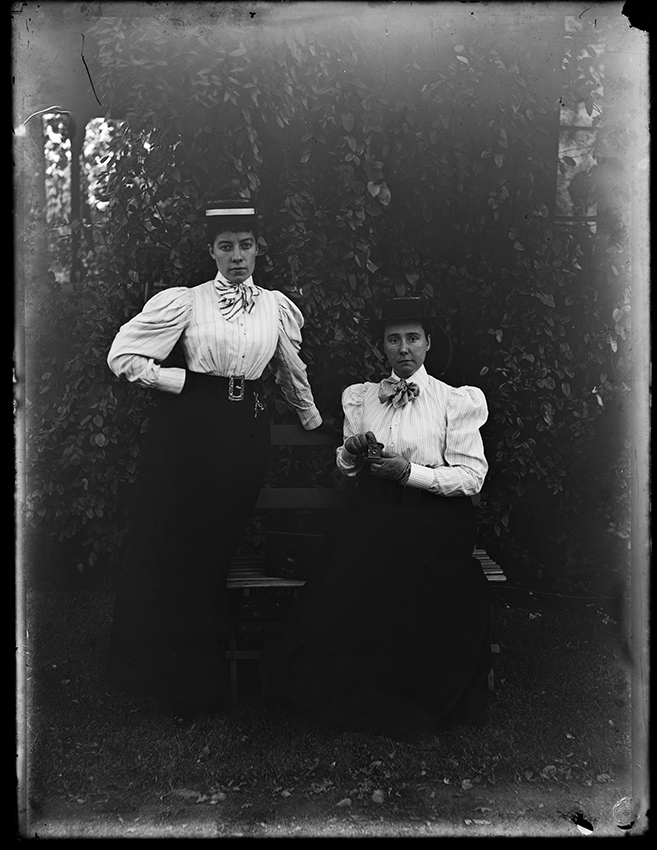
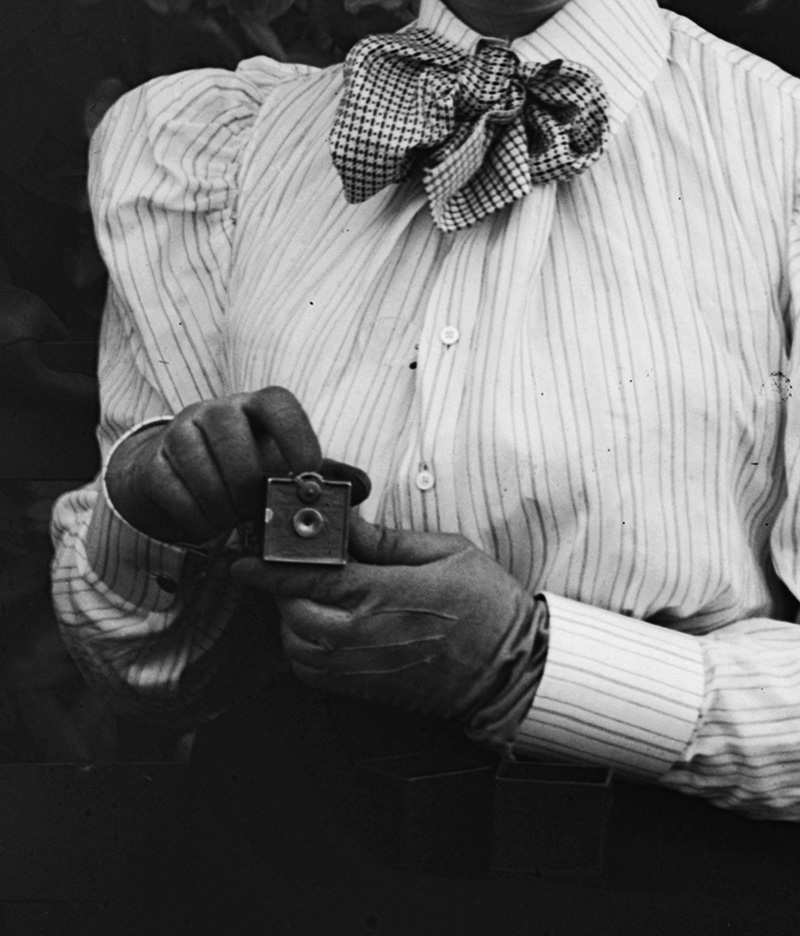
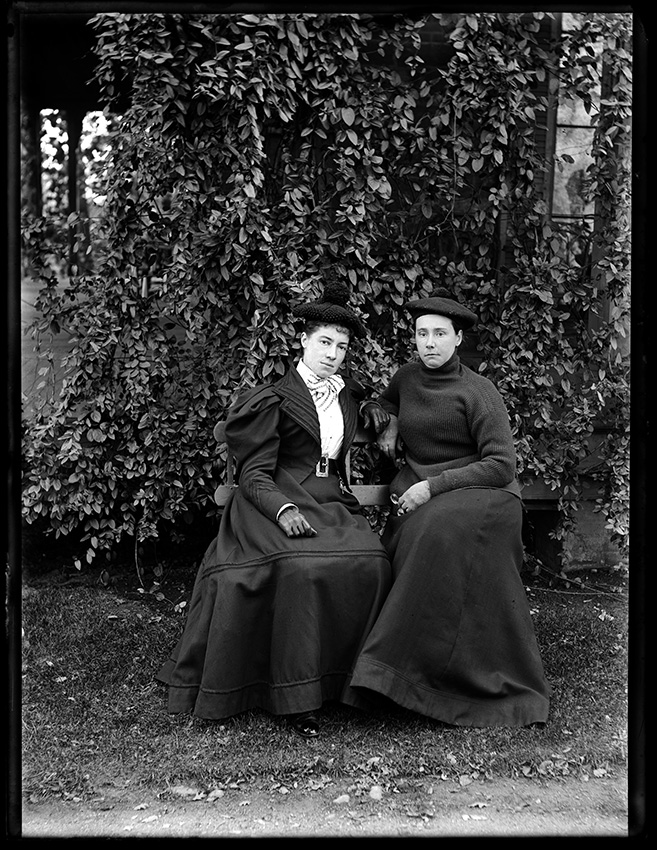
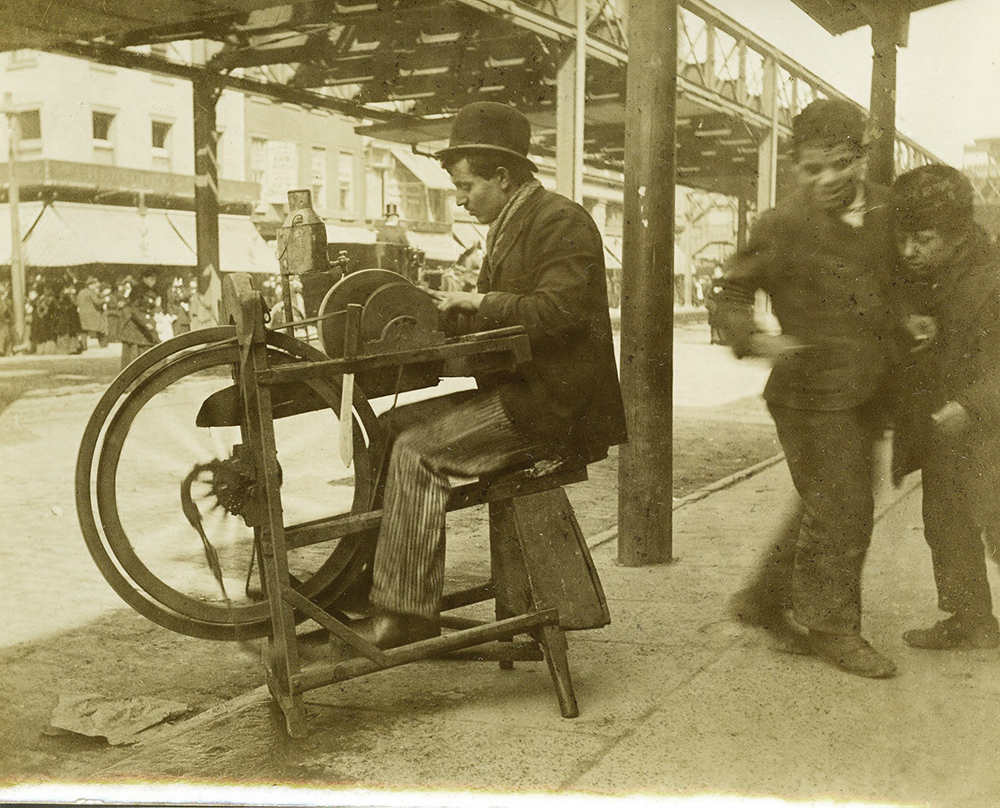
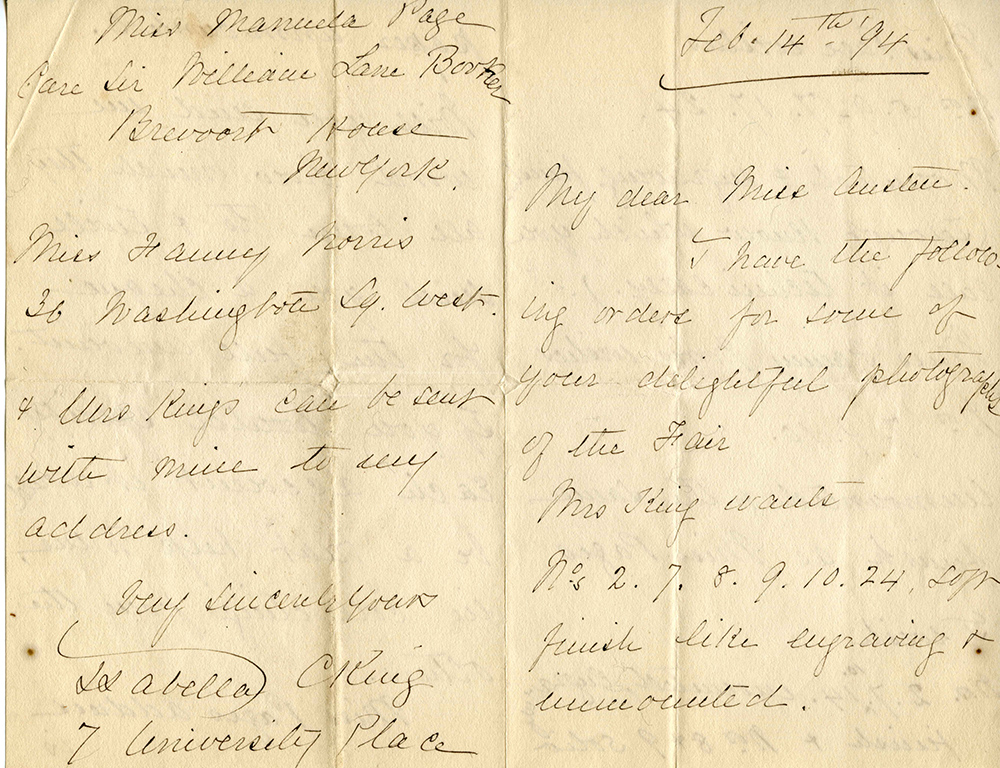
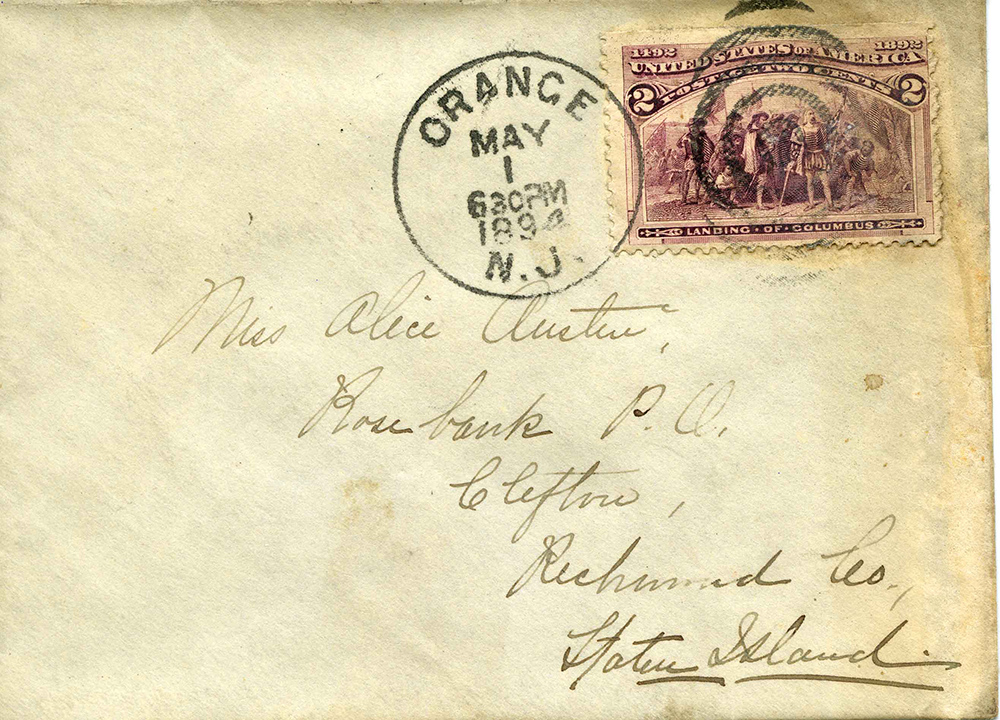
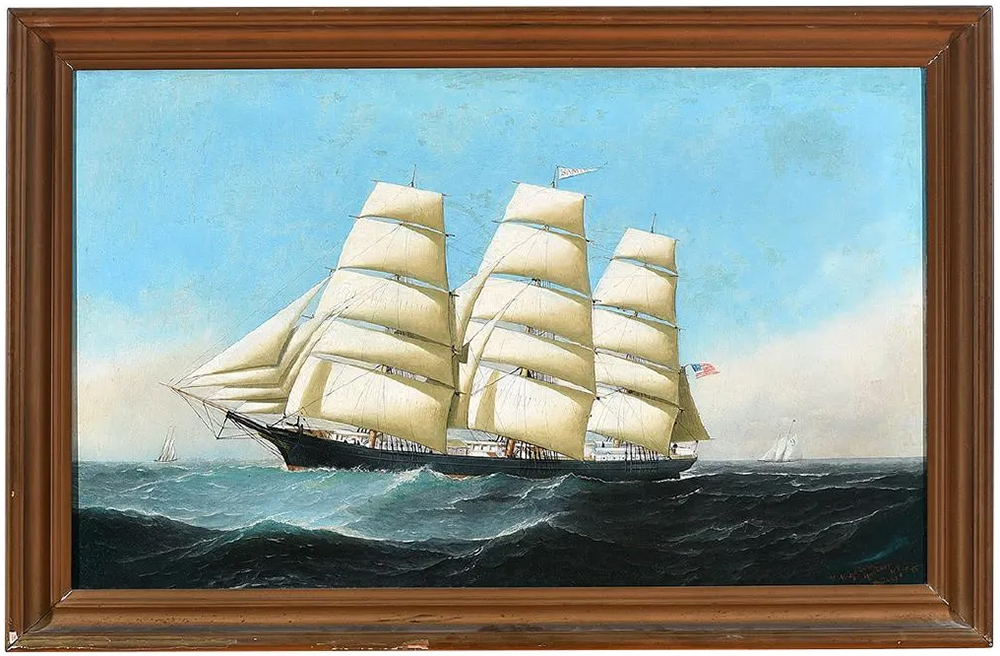
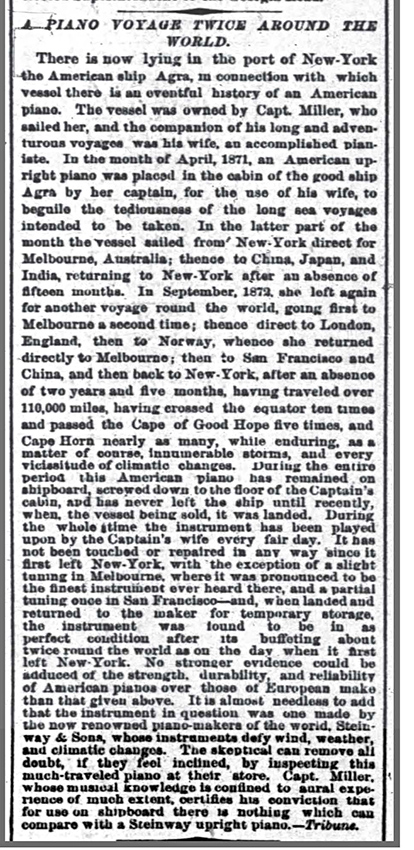

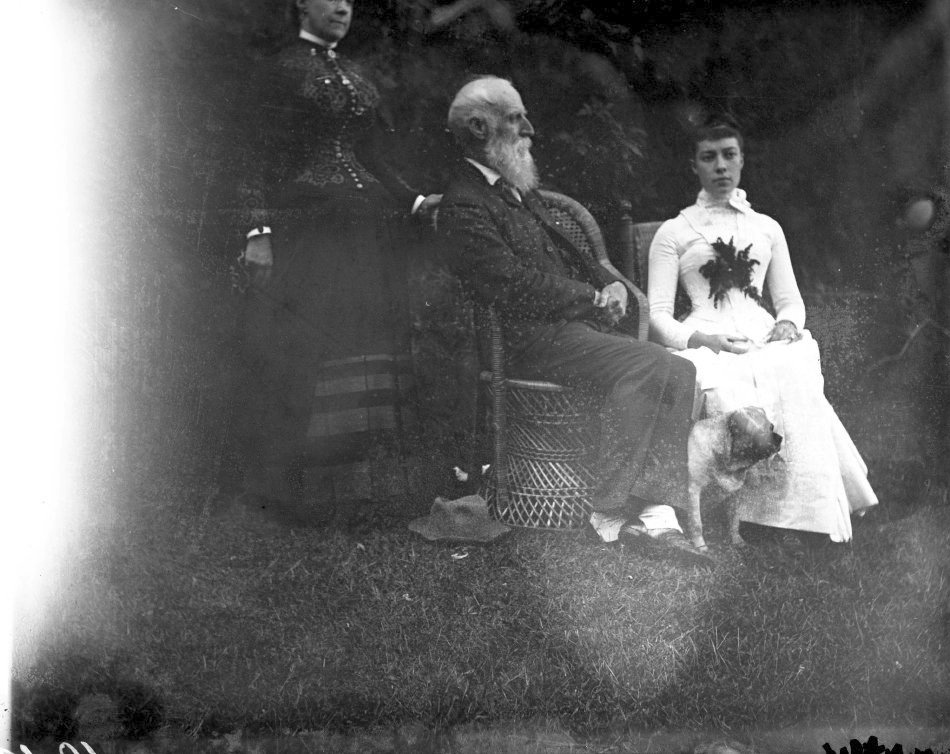
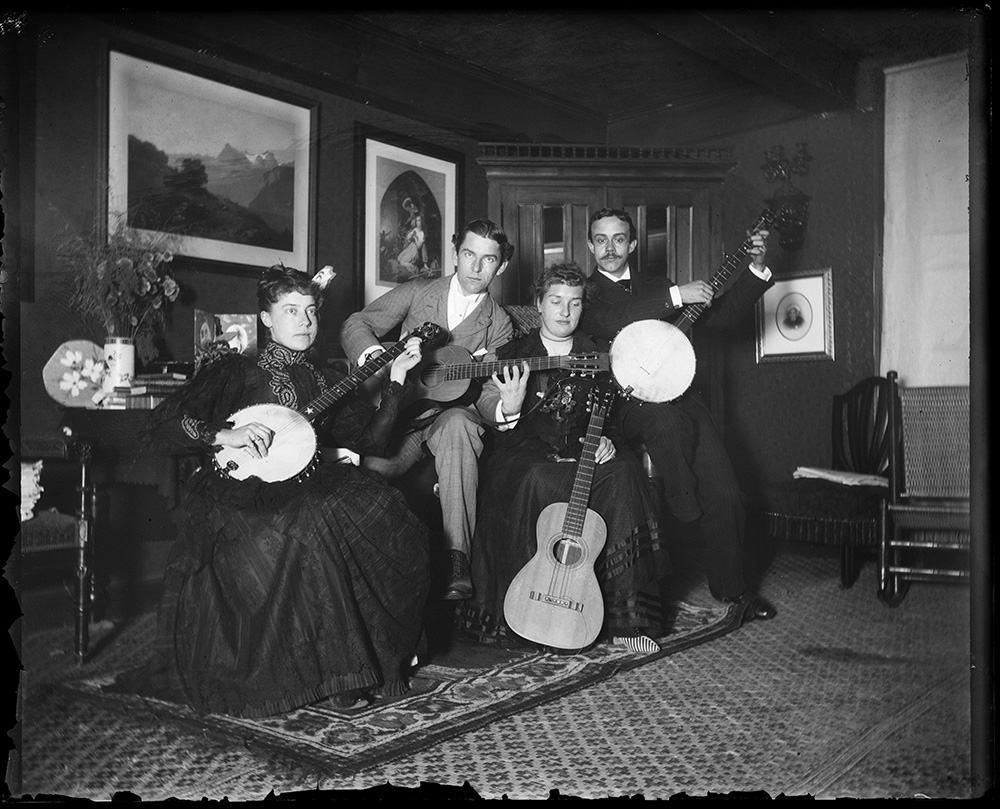
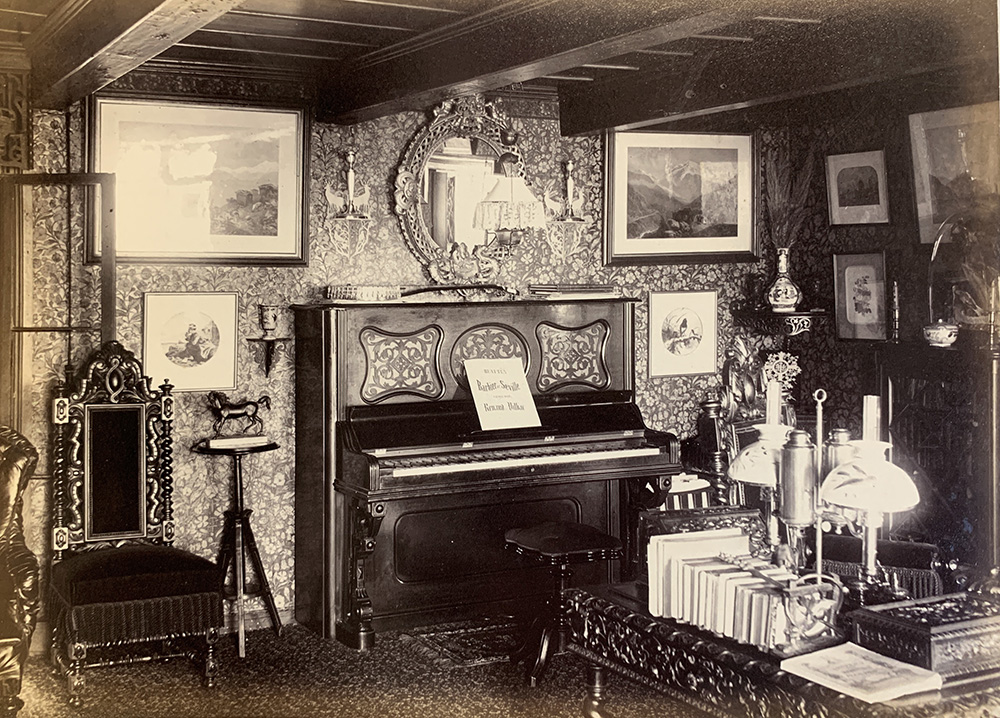
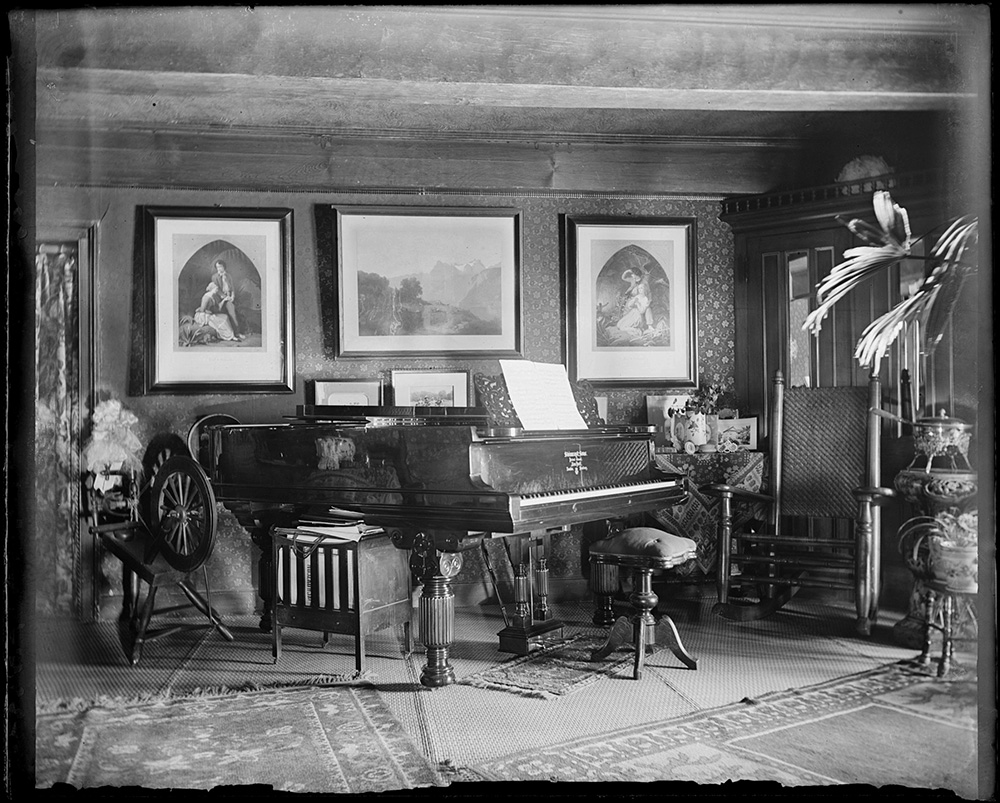
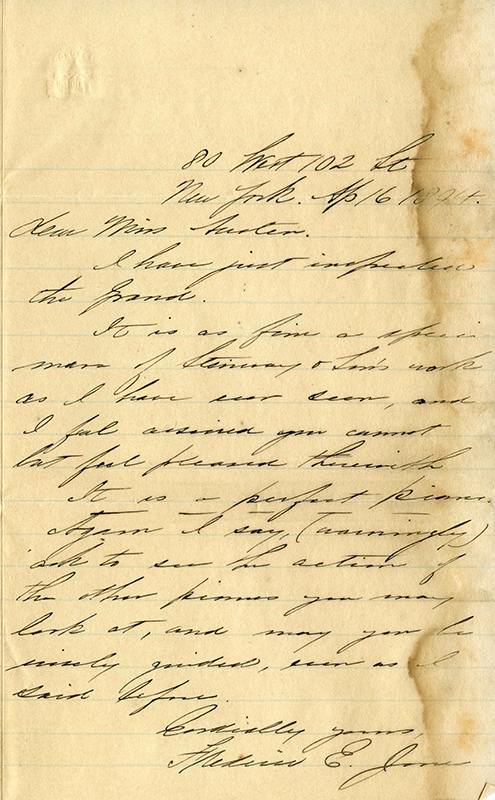
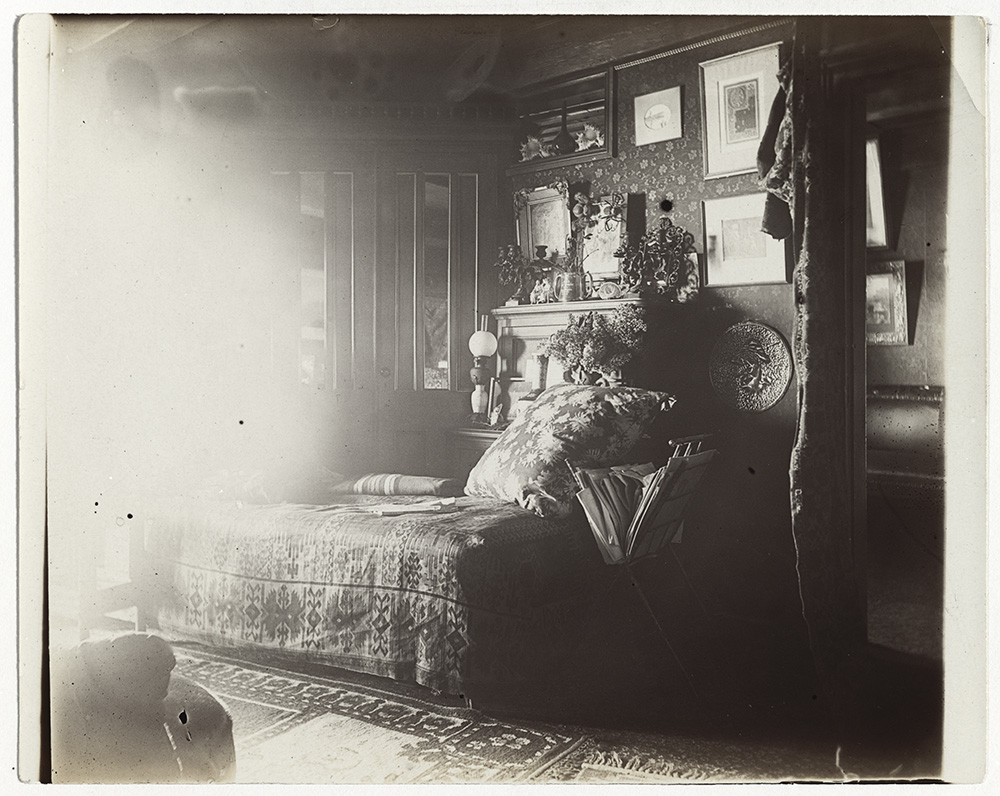
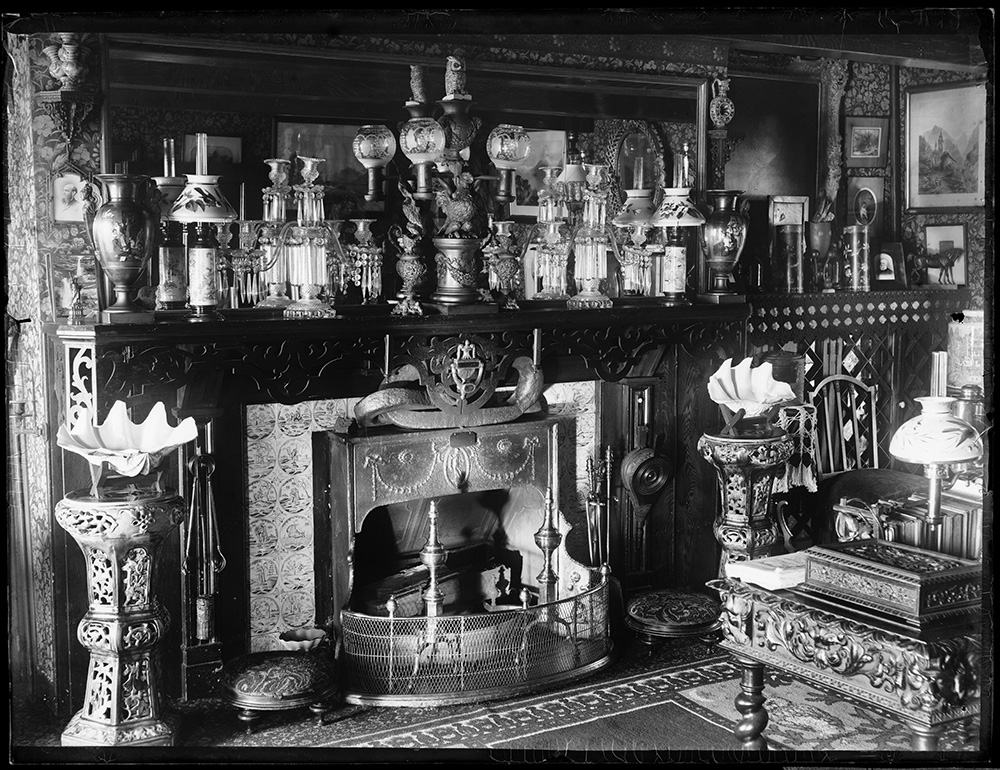
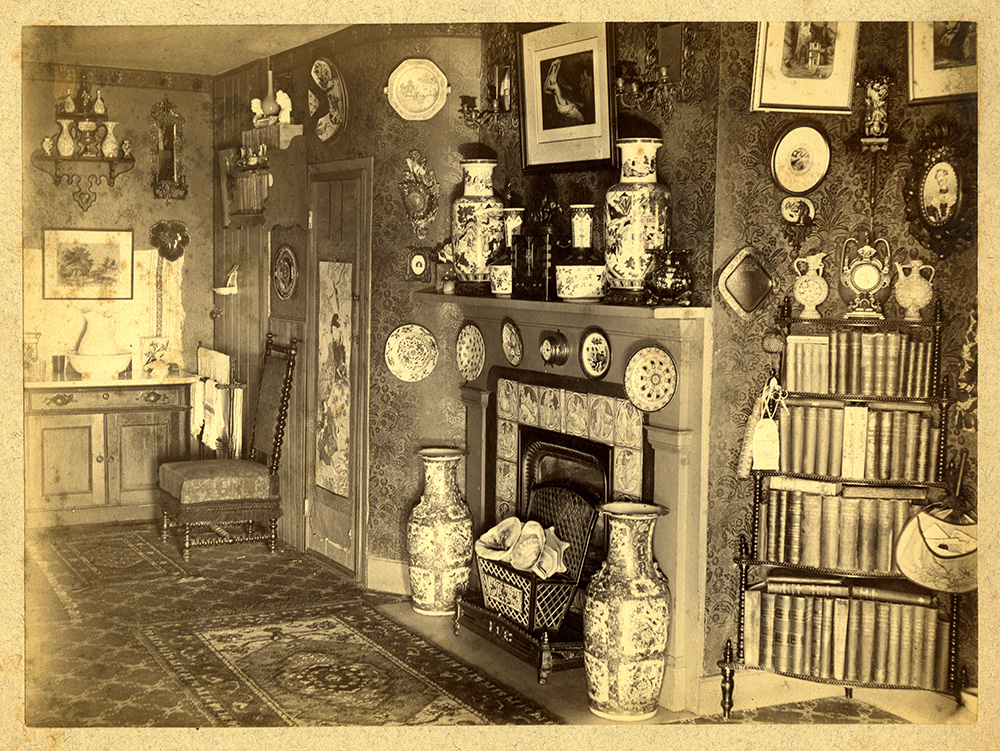
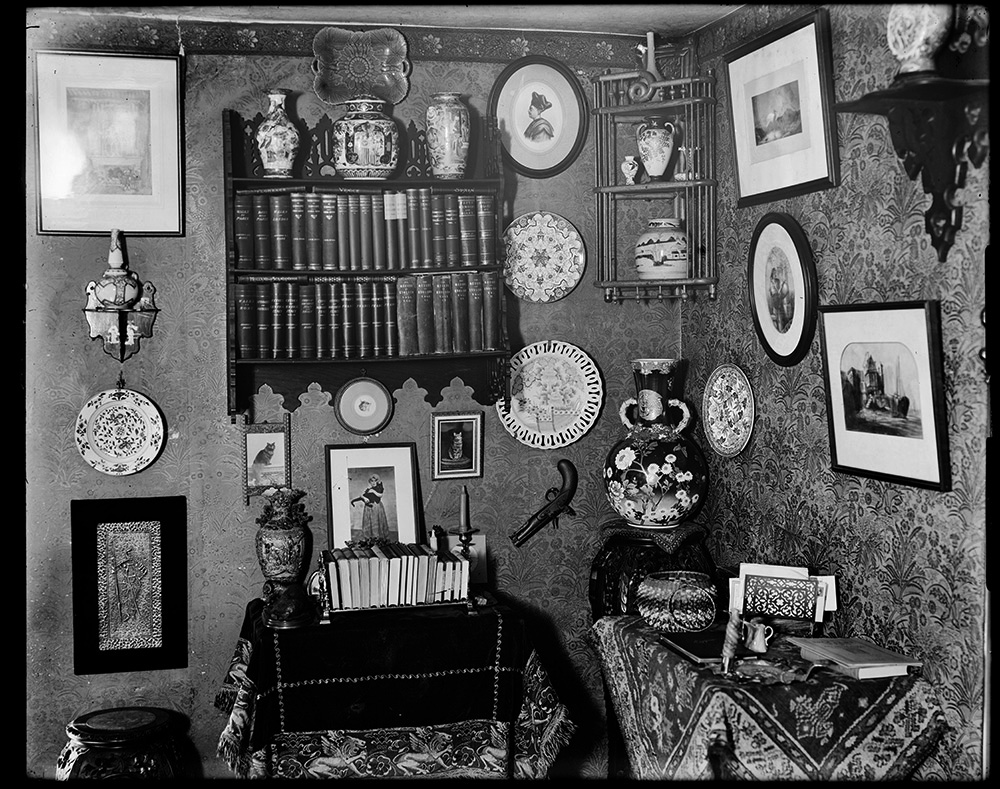


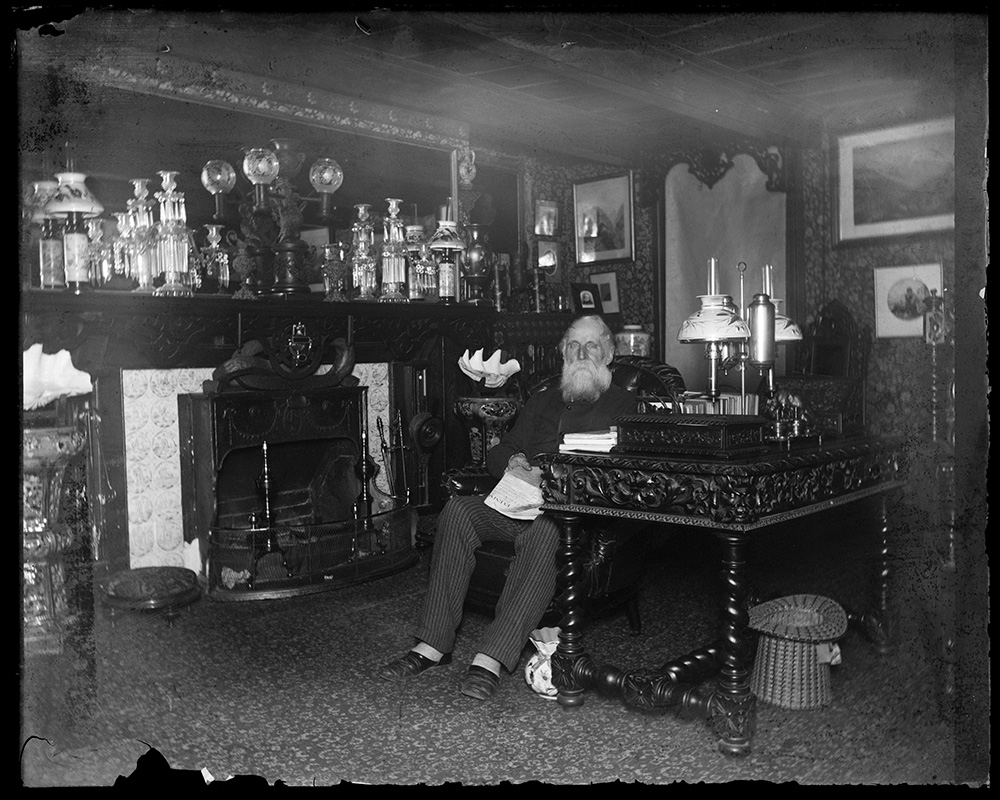
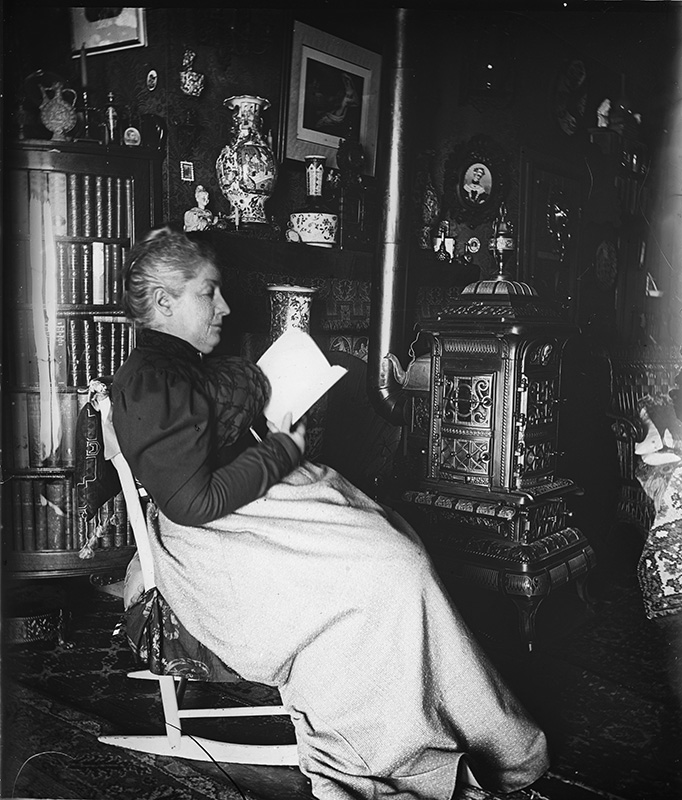
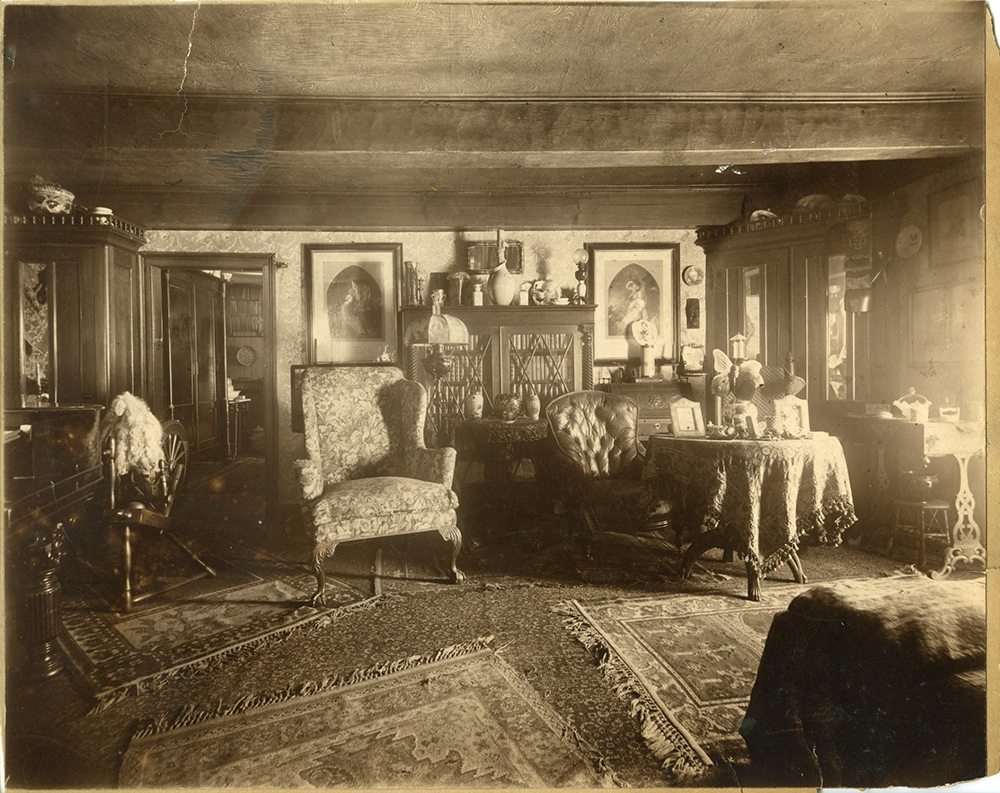
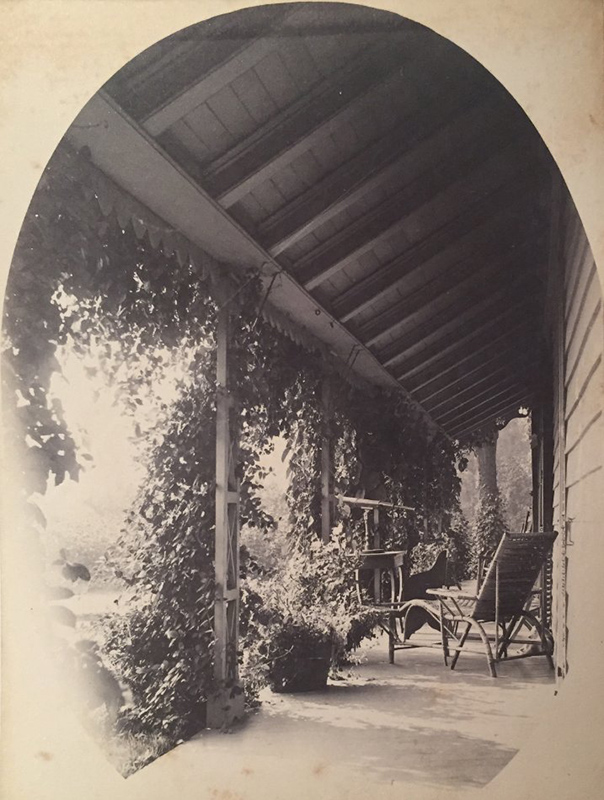
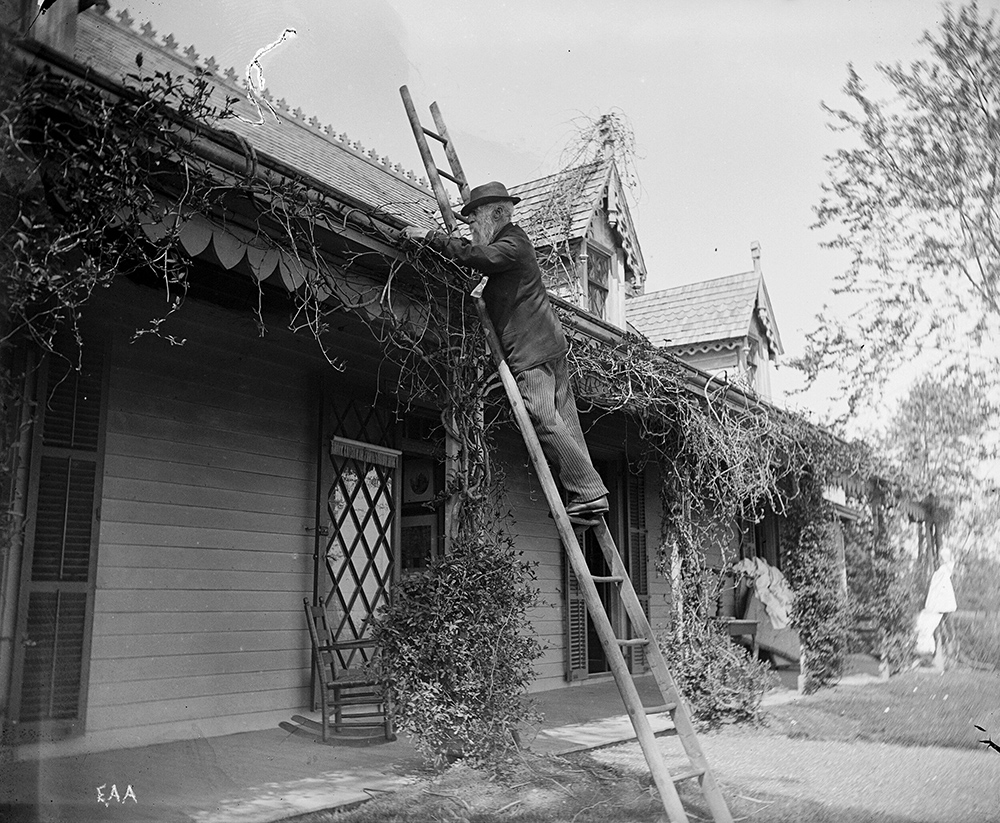
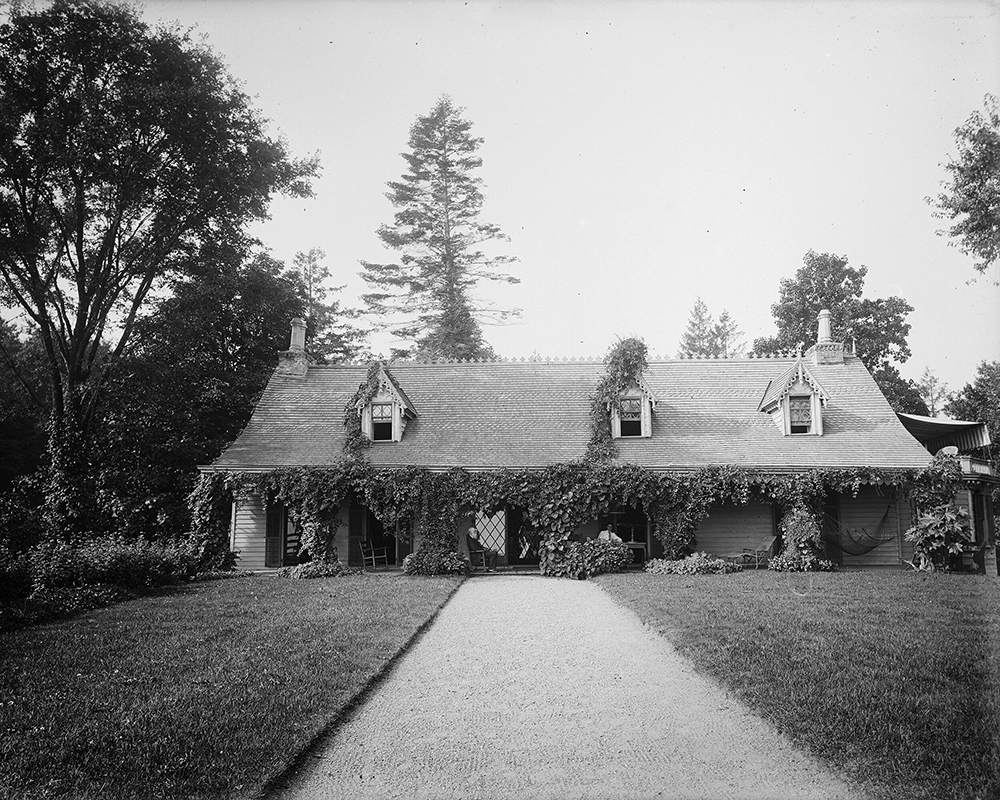

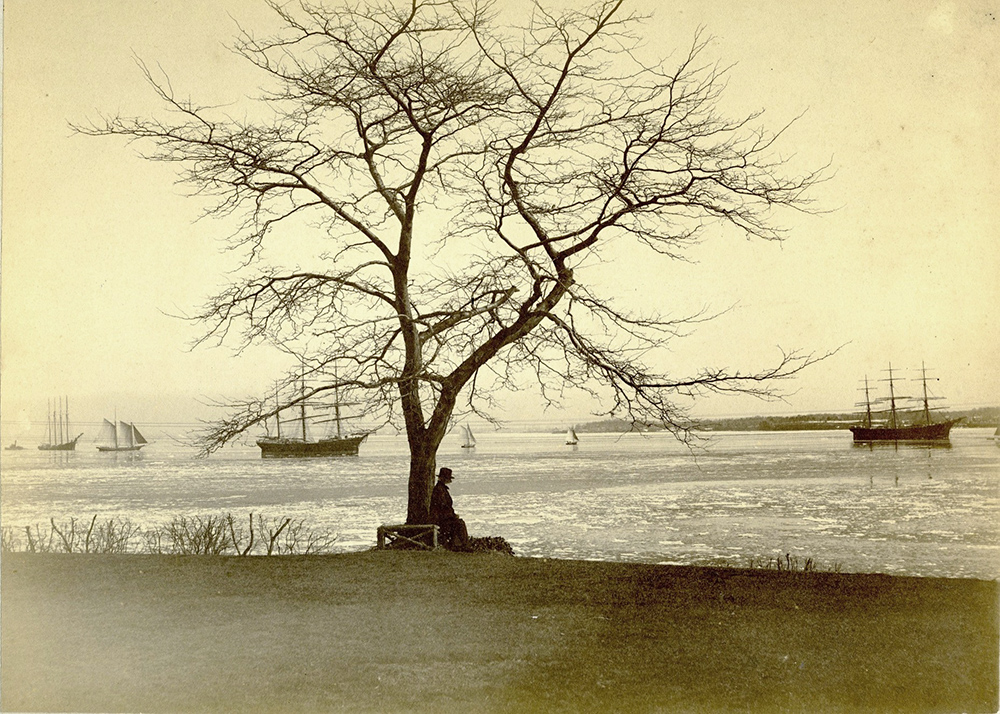
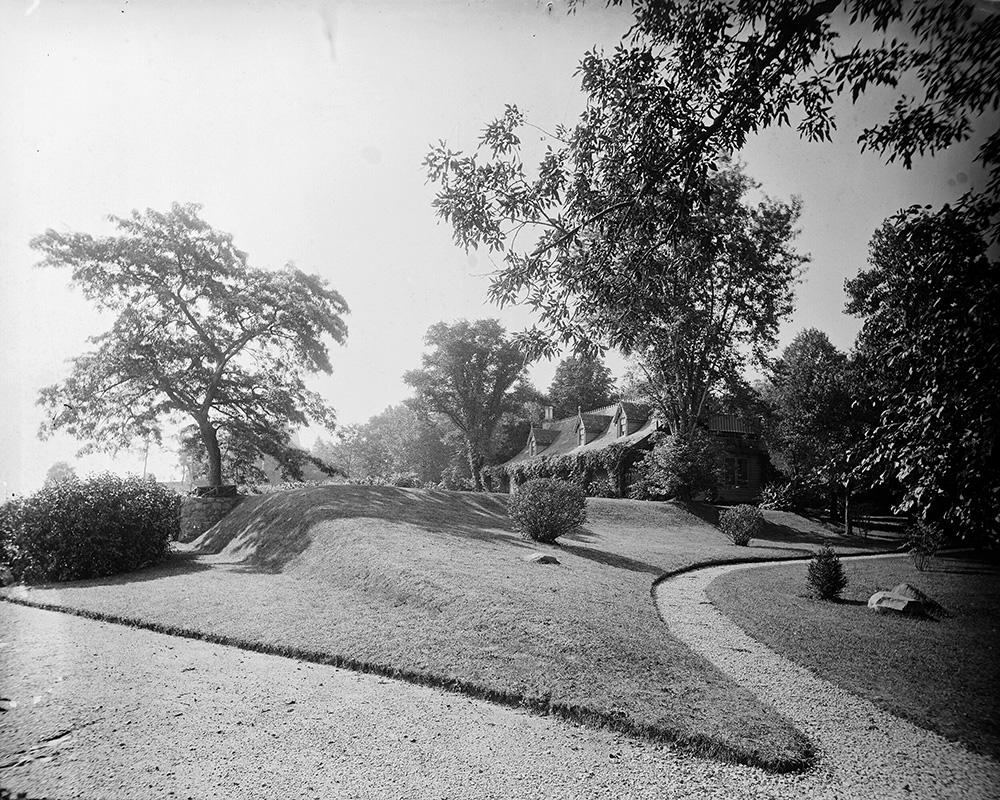
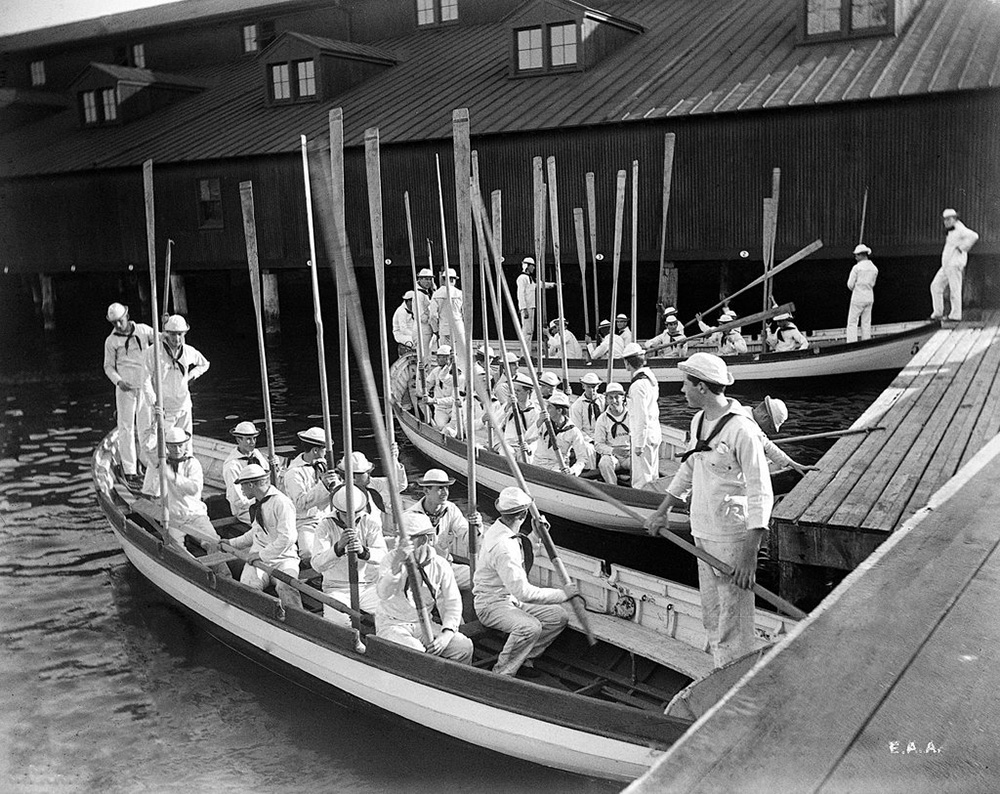
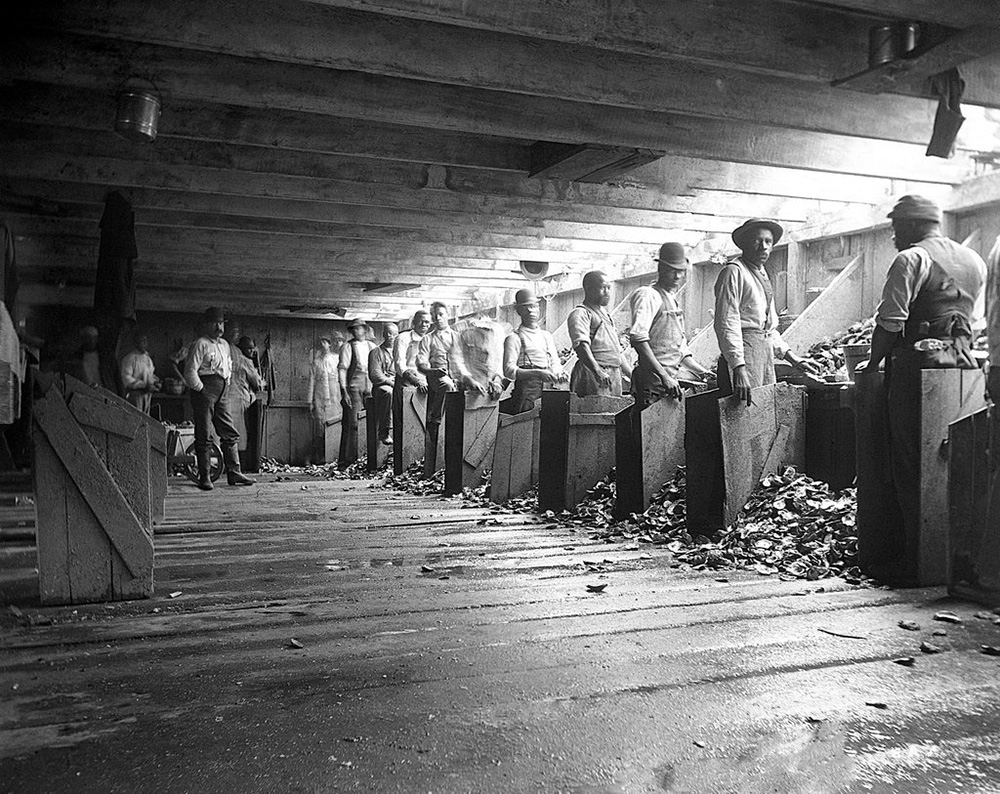
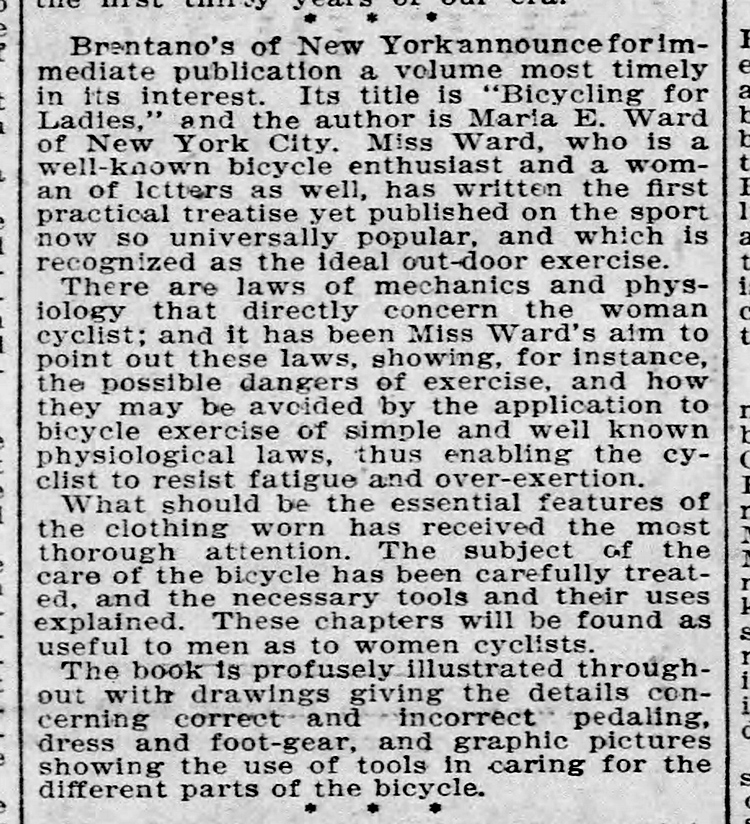
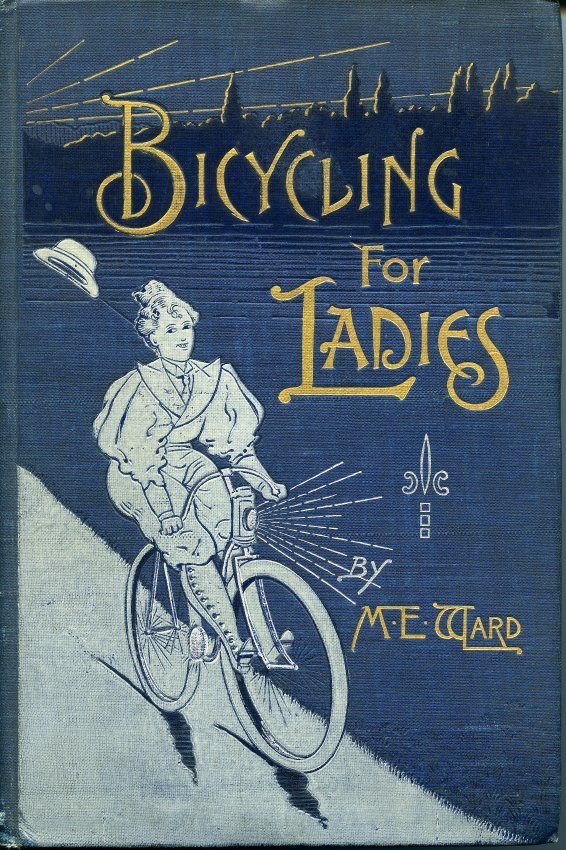

 Visit Podcast Website
Visit Podcast Website RSS Podcast Feed
RSS Podcast Feed Subscribe
Subscribe
 Add to MyCast
Add to MyCast